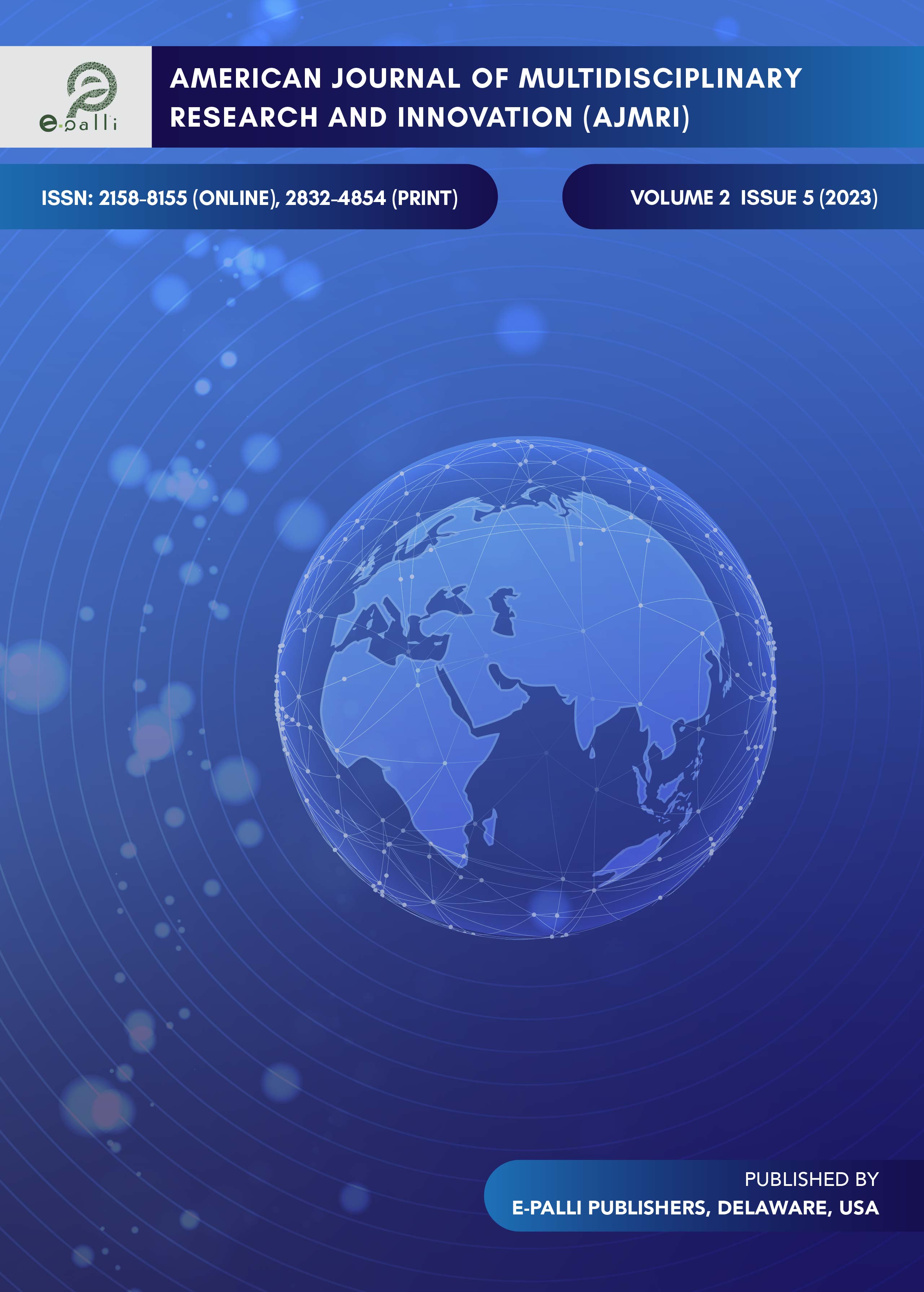E-Learning in the Educational System Post COVID-19 Pandemic: a Review of the Obstacles and Opportunities to Curriculum Designers
DOI:
https://doi.org/10.54536/ajmri.v2i5.1497Keywords:
E-Learning, Educational System, Teaching-Learning Process, Curriculum Development, Learning Process, Hybrid Learning, Online Learning and TeachingAbstract
The COVID-19 epidemic has been spreading since the year 2019. Each country that has been affected by COVID-19 possesses its own unique political, social, cultural, economic, and educational system; however, each country has become a model for limiting the disease’s further spread (COVID-19). The government and society in Indonesia are both affected by COVID-19 policies. The educational policy implemented by the government has implications for those who teach, those who regulate education, and the environment. The COVID-19 virus was a burden for educators. Learning is enhanced through media platforms with several other students. This study uses a qualitative approach to understand better educational and technological development and student benefits and drawbacks. This study uses mixed data collecting, inductive/qualitative data analysis, and qualitative research outputs to explore descriptive phenomena using the researcher’s qualitative generalization technique. relates to implementing and employing e-learning platforms, the findings indicate that instructors’ perceptions of the complexity of technology have a positive impact on attitude simplicity of use but have no effect on perceived usefulness. Results show that instructors’ perceptions of the complexity of technology have no effect on perceived usefulness. the quality of education is crucially significant, which strongly supports both of these viewpoints.
Downloads
References
Arikunto suharsimi. (2006). Metodologi Penelitian. 50.
Fauzi, M. A. (2022). E-learning in higher education institutions during COVID-19 pandemic: current and future trends through bibliometric analysis. Heliyon, 8(5), e09433. https://doi.org/10.1016/j.heliyon.2022.e09433
Fischer, G., Giaccardi, E., Eden, H., Sugimoto, M., & Ye, Y. (2005). Beyond binary choices: Integrating individual and social creativity. International Journal of Human Computer Studies, 63(4-5 SPEC. ISS.), 482–512. https://doi.org/10.1016/j.ijhcs.2005.04.014
Gorgy, A., El Hawary, H., Galli, R., MacDonald, M., Barone, N., & Thibaudeau, S. (2022). Evaluating the educational quality of surgical YouTube® videos: a systematic review. Health Sciences Review, 100067. https://doi.org/10.1016/j.hsr.2022.100067
Gumelar, D. R., & Dinnur, S. S. (2020). Digitalisasi Pendidikan Hukum Dan Prospeknya Pasca Pandemi Covid-19. Al-Ahwal Al-Syakhsiyyah: Jurnal Hukum Keluarga Dan Peradilan Islam, 1(2), 111–122. https://doi.org/10.15575/as.v1i2.9909
Guo, C., & Wan, B. (2022). The digital divide in online learning in China during the COVID-19 pandemic. Technology in Society, 71(March), 102122. https://doi.org/10.1016/j.techsoc.2022.102122
Indrayana, B., & Sadikin, A. (2020). Penerapan E-Learning Di Era Revolusi Industri 4.0 Untuk Menekan Penyebaran Covid-19. Indonesian Journal of Sport Science and Coaching, 2(1), 46–55. https://doi.org/10.22437/ijssc.v2i1.9847
Jeong, H. C., & So, W. Y. (2020). Difficulties of online physical education classes in middle and high school and an efficient operation plan to address them. International Journal of Environmental Research and Public Health, 17(19), 1–13. https://doi.org/10.3390/ijerph17197279
Lubis, A. H., & Dasopang, M. D. (2021). Online learning during the covid-19 pandemic: How is it implemented in elementary schools? Premiere Educandum : Jurnal Pendidikan Dasar Dan Pembelajaran, 11(1), 120. https://doi.org/10.25273/pe.v11i1.8618
Nurulfa, R., Motto, C. A., Dlis, F., Tangkudung, J., Lubis, J., & Junaidi. (2021). Physical education survey during the covid-19 pandemic in Eastern Indonesia. International Journal of Human Movement and Sports Sciences, 9(4), 668–675. https://doi.org/10.13189/saj.2021.090410
Ruparel, N., Dhir, A., Tandon, A., Kaur, P., & Islam, J. U. (2020). The influence of online professional social media in human resource management: A systematic literature review. Technology in Society, 63(July), 101335. https://doi.org/10.1016/j.techsoc.2020.101335
Saleh, M. A., Khan, M. I., Banerjee, S., & Safi, F. (2023). A tale of online learning during COVID-19: A reflection from the South Asian Association for Regional Cooperation (SAARC) countries. Heliyon, 9(6), e16347. https://doi.org/10.1016/j.heliyon.2023.e16347
Shi, P., Dong, Y., Yan, H., Li, X., Zhao, C., Liu, W., ... & Xi, S. (2020). The impact of temperature and absolute humidity on the coronavirus disease 2019 (COVID-19) outbreak-evidence from China. MedRxiv, 2020-03. https://doi.org/10.1101/2020.03.22.20038919
Tran, V. D., Nguyen, T. M. L., De, N. Van, Soryaly, C., & Doan, M. N. (2019). Does cooperative learning may enhance the use of students’ learning strategies? International Journal of Higher Education, 8(4), 79–88. https://doi.org/10.5430/ijhe.v8n4p79
V.Rasiah, R. R. (2014). Transformative Higher Education Teaching and Learning: Using Social Media in a Team-based Learning Environment. Procedia - Social and Behavioral Sciences, 123(2012), 369–379. https://doi.org/10.1016/j.sbspro.2014.01.1435
Wagiran, W., Suharjana, S., Nurtanto, M., & Mutohhari, F. (2022). Determining the E-Learning Readiness of Higher Education Students: A Study During the COVID-19 Pandemic. SSRN Electronic Journal, 8(June 2021), e11160. https://doi.org/10.2139/ssrn.4153216
Wajdi, M. B. N., Iwan Kuswandi, Umar Al Faruq, Zulhijra, Z., Khairudin, K., & Khoiriyah, K. (2020). Education Policy Overcome Coronavirus, A Study of Indonesians. EDUTEC : Journal of Education And Technology, 3(2), 96–106. https://doi.org/10.29062/edu.v3i2.42
Downloads
Published
How to Cite
Issue
Section
License
Copyright (c) 2023 Sariakin, Nora Fitria, Cut Faiza, Amiruddin, Musliadi Bin Usman

This work is licensed under a Creative Commons Attribution 4.0 International License.







